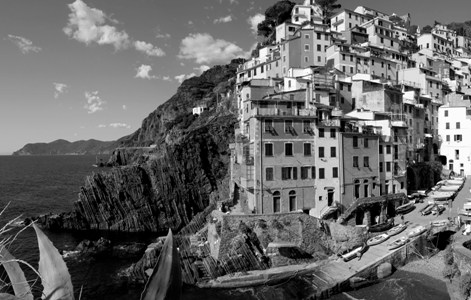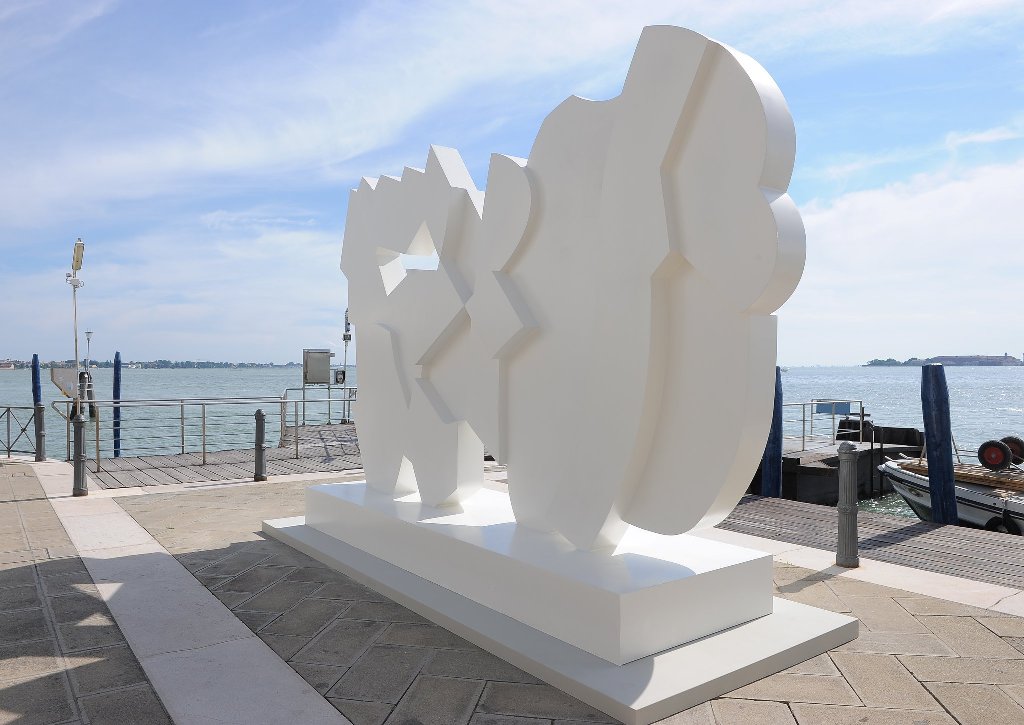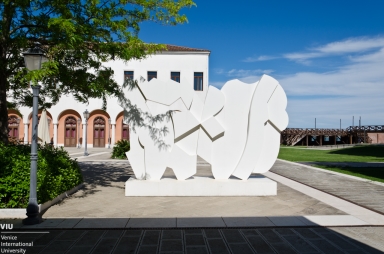 |
Italia in Movimento: Direttrici e Paesaggi dall'Unità d'Italia ad oggi On the occasion of the celebration for the 150-year Unification of Italy, an exhibition of 80 photographs tracing the history of Italy and of landscape trasformation took place at VIU. |
 |
Il Veneto di Hemingway The project, supported by the Veneto Region, is based on the idea of reconstructing and valorizing the region through Hemingway's experience during his stays in Italy from 1948 to 1954. |

The name of the sculpture alludes to the merger of two individual bifrontal sculptures, laterally joined to create a new "sensitive" object that looks at us and involves us.
The sculpture seems to emerge from the ground as though inventing a way to converse. If observed from the upper section, it looks as if it issues from the arched, rhythmic strip of the profile, before spreading out with the jutting forms of the central part and finishing in the base, without which it could not stand, but which serves to place the piece in a "inexistent" site, in an ideal rapport between two opposing horizons.
The completely uniform white colour does not appear as a coating, but as a body of the plasticity of the piece itself and determines its structure: by not having any gradations, variations of light and shade are avoided so that the immediacy is not lost, and the observer's attention is not led astray by detail.
Consagra's own choice of frontal viewing, giving value to the placement of the sculpture, offers an alternative direct human communication, a different attitude toward what already exists.
Presentation of the sculpture: May 31, 2011 - 5 pm
During his long career Pietro Consagra (Mazara del Vallo, Sicily, 1920 - Milan, 2005) touched upon all the different aspects of artistic creativity. While he produced the sculptures for which he is internationally acclaimed, he also painted and drew, exploring new media and techniques, wrote poetry and essays, designed buildings and large-scale urban installation, along with tiny pieces of jewellery.
From 1948 onward he began to express in his sculptural works a "frontal vision" and unique viewing angle; this intention was endorsed by the Colloqui series, which secured his recognition at international level. In 1960 he was awarded the Sculpture Prize at the Venice Biennale.
In 1968 he proposed his concept of bi-frontality, having a minimum thickness of two tenths of a millimetre in the Extremely-thin series in steel, to a maximum of six metres for the buildings of the Frontal City. On the basis of this maximum consistency for the double frontality, came a series of large-scale sculptures, such as the Stones of Versilia (1973), Back-to-back (1976), Walls (1977), Interferences (1985), Sibillines (1990), Gates (1990), Façades (1996), and Double Bifrontals (2000).
Doppia Bifrontale (Double Bifrontal)
Dimensions: 335 x 490 x 120 cm
Plinth: 35 x 400 x 120 cm
Technique: Painted iron


Presentation of the sculpture: May 31, 2011
![]() Press release (Italian/English)
Press release (Italian/English)
Visit Pietro Consagra Website
The Suzhou Academy of Traditional Chinese Painting was founded in 1960 to preserve and transmit the style not only of the Wu school, nut of traditional painting in general. However, its role is not just to simply transmit the canons of the past, but also to constantly renew them, with excellent results: the works of the Academy masters adorn the Great Hall of the People (the Chinese parliament) and many other government buildings. In recent years, this prestigious institution has been very active in organizing exhibitions both nationally and internationally.
This exhibition, promoted by the Suzhou Academy of Traditional Chinese Painting, the City of Venice, the Province of Venice, the Venice Expo Committee, Venice International University, San Servolo Servizi, the Department of Far Eastern Studies of Ca' Foscari and the Istituto Confucio, presents 58 works by 17 painters illustrating the different genres of traditional Chinese painting: landscapes, "flowers and birds", portraits etc. While the inspiration is antique, the result is modern: the artists reinterpret a tradition that is deeply rooted in contemporary China according to their present-day sensibility.
For example, the paintings in the "flowers and birds" genre by di Xu Yuanshao recall the luscious style of the great Xu Wei (1521-1593), with splashes of ink that suggest shapes rather than defining them precisely, a style that had also been used by Qi Baishi (1864-1957). Sun Junliang seems to rely on Huang Binhong (1865-1955), an artist and theorist who adapted the painting of the literati to the new social realism of the early 20th century. The works of Liu Jia are a homage to Luo Zhongli, a master of photographic realism, with faces whose hyper-realistic wrinkles are now rendered by thick ink strokes. Whatever genre inspired them, all the paintings on show are in ink and colour (some only in ink) on paper, exactly according to Chinese tradition.
Each group is given 10 notebooks and can use one or more for the presentation of the final project, along with other media.
Theme: Mapping Contemporary Venice (considered as a metropolitan city, comprehending Padua and Treviso territories).
The groups are a maximum of 10, formed by a mix of students with different backgrounds.
They have to map contemporary Venice, reinterpeting it according to their creativity and cultural background.




















